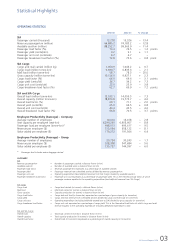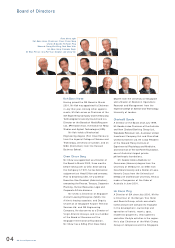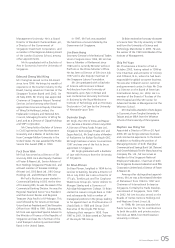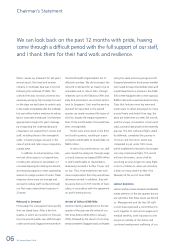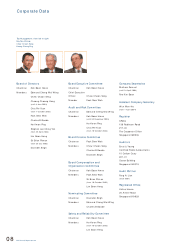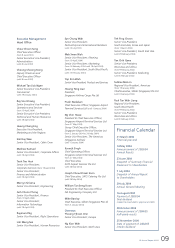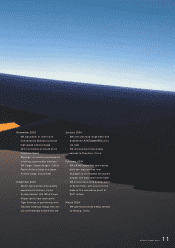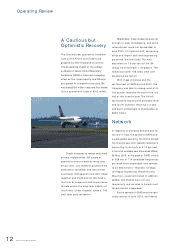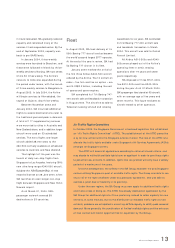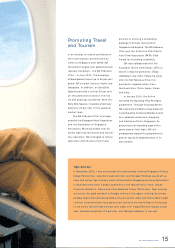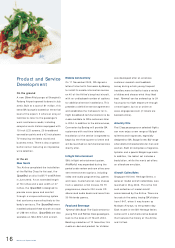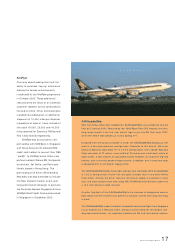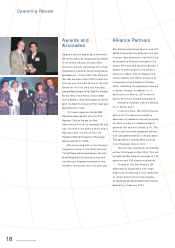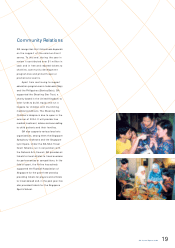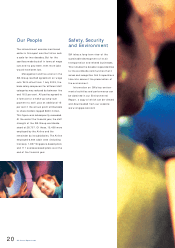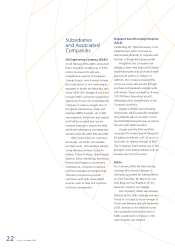Singapore Airlines 2004 Annual Report Download - page 15
Download and view the complete annual report
Please find page 15 of the 2004 Singapore Airlines annual report below. You can navigate through the pages in the report by either clicking on the pages listed below, or by using the keyword search tool below to find specific information within the annual report.
Air Traffic Rights Committee
In October 2003, the Singapore Government introduced legislation that established
an “ Air Traffic Rights Committee” (ATRC). The establishment of the ATRC paves the
way for new entrants into the Singapore aviation market. The role of the ATRC is to
allocate the traffic rights available under Singapore’s Air Services Agreements (ASAs)
amongst all Singapore carriers.
The ATRC will assess all applications according to national interest criteria, and
may decide to withhold available rights from an applicant in order to give those rights
to potential new entrants. In addition, rights that are granted will only have a validity
period of a maximum of five years.
Until this development, the airlines in the SIA Group had been the only Singapore
carriers utilising Singapore’s pool of available traffic rights. The Group was able to use
any or all of the rights available under any particular agreement, and was able to
exercise a great deal of flexibility in its planning.
Under the new regime, the SIA Group must now apply for additional traffic rights
and make a case in doing so. The ATRC has already declined an application by the
SIA Group for additional rights to China, preferring instead to retain capacity for new
entrants. In some markets, due to the distribution of available traffic rights to new
entrants, problems are anticipated in mounting ad hoc capacity to satisfy peak seasonal
demand. More generally, the combination of limited available rights and the entrance
of new carriers will restrict opportunities for expansion by the Group.
in travel recovered. SIA gradually restored
capacity and reinstated many of the
services it had suspended earlier. By the
end of September 2003, capacity was
back to pre-SARS levels.
In January 2004, thrice-weekly
services were launched to Shenzhen, and
these were followed in March by thrice-
weekly services to Nanjing. SIA now serves
China 53 times weekly. The Airline’s
network to India also expanded during
the period under review, with the launch
of thrice-weekly services to Bangalore in
August 2003. In July 2004, the Airline
will begin services to Ahmedabad, the
capital of Gujarat, also thrice weekly.
Between November 2003 and
January 2004, SIA mounted additional
flights to several destinations to cater to
the traditional year-end peak in demand.
A total of 117 supplementary services
were mounted to cities in Australia and
New Zealand alone, and in addition larger
aircraft were used on 33 scheduled
services. The extra flights and larger
aircraft added 38,000 seats to the
360,900 normally available on scheduled
services to Australia and New Zealand.
The highlight of the year was the
launch of daily non-stop flights from
Singapore to Los Angeles, featuring SIA’s
new ultra-long-range A340-500 aircraft,
dubbed the A345LeaderShip. A new
record will be set on 28 June 2004, when
SIA launches an even longer non-stop
flight between Singapore and New York’s
Newark airport.
As at March 31, 2004, SIA’s
passenger network covered 59
destinations in 33 countries.
Fleet
In August 2003, SIA took delivery of its
50th Boeing 777 aircraft and so became
the world’s second largest B777 operator.
At the end of the year in review, SIA had
52 Boeing 777 aircraft in its fleet.
January 2004 marked the arrival of
the first three Airbus A340-500 aircraft
ordered by the Airline. The 10 aircraft on
order – five firm and five on option – are
worth US$2.2 billion, including the cost
of spares and spare engines.
SIA completed its 17th Boeing 747-
400 aircraft sale and leaseback transaction
in August 2003. The aircraft was sold to
Tarbenian Leasing Limited and is being
leased back for six years. SIA concluded
its first Boeing 777-300 aircraft sale
and leaseback transaction in M arch
2004. This aircraft was sold to Orchid
Aircraft Limited.
All Airbus A310-300s and A340-
300s were phased out of the Airline’s
operating fleet in 2003, ceasing
operations after 19 years and seven
years respectively.
SIA disposed of three B747-400s,
five A310-300s and five A340-300s
during the year. As at 31 March 2004,
SIA’s passenger fleet stood at 95 aircraft,
with an average age of five years and
seven months. This figure excludes six
aircraft leased to other operators.
SIA Annual Report 03/04 13


